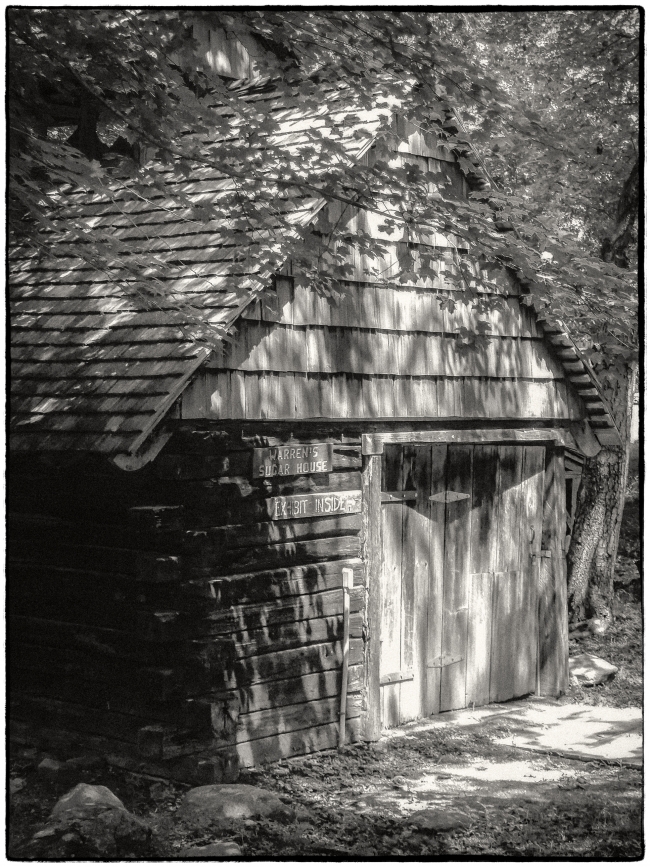This picture was taken with a Panasonic Lumix ZS7 at Teatown Lake Reservation, one of my favorite places to walk. I liked the rustic look, the wood textures and the dappled light. It works better in black and white than in the original color.
Teatown Lake Reservation by Lincoln Diamant describes the sugarhouse as follows:
Modern-day sugaring at Teatown began with its first director, Warren Balgooyen. With a keen interest in homesteading and pioneer skills, Balgooyen quickly realized the potential sugaring offered for learning. From tapping a few maples, collecting sap by hand, and boiling it over an opern fire,, to the first small evaporator located in the old cider shed, Balgooyen tied together education and history. Certainly his sugarhouse, with its moss-covered roof and jauntily tilted chimney, is a reminder of how the history of the land can be a powerful tool in teaching about today’s environment.
Built in 1976 from woods culled from the property, the sugarhouse delights the many visitors that enter its doors. The shakes were hand split from white and red cedar, sassafras and oak – all trees known for their rot-resistant properties. Looking up at the rafters 25 years later, you can still see the adze marks on the beams. The littlest of children sometimes have to be coaxed inside; the dark interior and glowing fire stir up images of fairy tales told at bedtime.
The reservation’s web provides the following historical information:
The name Teatown dates back to 1776 when tea was scarce due to British taxation. A man by the name of John Arthur moved to the northern Westchester area hoarding a chest full of tea with thoughts of selling it at huge profit. A group of women called Daughters of Eve found out about the tea and demanded Mr. Arthur sell the tea at a reasonable fee. After refusing, the women laid siege to the farmhouse. Mr. Arthur finally agreed to sell the tea at a fair price in exchange for a peaceful withdrawal. Hence, the area became known as “Teatown.”
Teatown’s property was owned by Arthur Vernay, who built “The Croft” south of Spring Valley Road. That estate subsequently passed to Dan Hanna; in 1917, he constructed the stable, which now serves as Teatown’s Nature Center and executive offices, and the adjoining Carriage House, both on the slope north of Spring Valley Road.
…
In 1923, Gerard Swope, Sr., Chairman of General Electric, purchased “The Croft” and all its surrounding land. He and his family enjoyed riding horses, so they stabled the animals in the English tudor outbuildings and built a network of horse trails. A few years later, he dammed Bailey Brook, which flooded a low-lying meadow, creating the 42-acre Teatown Lake.
…
After enjoying the land almost daily for many years, Mr. Swope died in 1957, leaving the property to his children. In 1963, the heirs of Gerard Swope gave the Brooklyn Botanic Garden 194 acres to provide an outreach station in Ossining. In exchange for the donation, the Swope’s directed the Botanic Garden to conserve the open space while educating the public about the resources such land could provide. Teatown began functioning with only a small staff and a few volunteers, offering nature classes and activities for both children and adults. In 1971, Teatown became formally incorporated as a separate legal entity, and 21 community members made up a board of directors.

